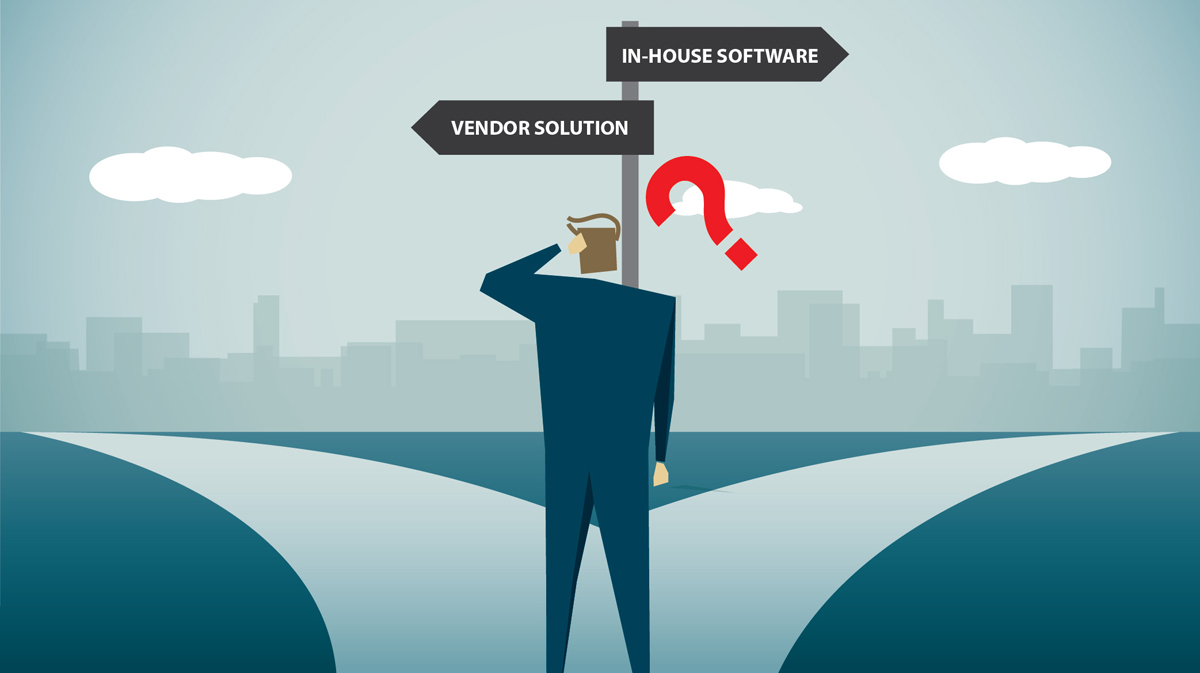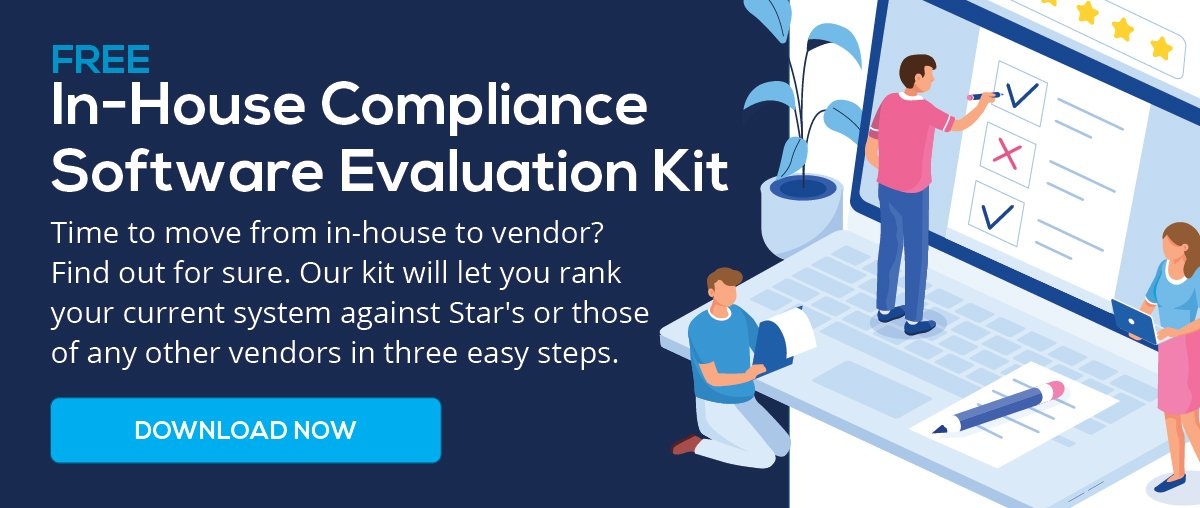Depending on the size of your organization, you may have spent hundreds of thousands or even millions of dollars to build and maintain your in-house compliance software. The question is, can the software keep up with your needs? Or is it only solving for the bare minimum?
In the last five years, more than 50% of Star’s clients have switched from an in-house, home grown software to the STAR Platform. If Star's experience is anything to go by, firms are jumping the internal-build ship to go with solutions that are maintained by companies whose sole job is to build compliance software, like Star. A recent report from the consulting firm McKinsey offers some insight as to why.
Their 2018 compliance benchmarking survey of leading banks noted that, in the wake of the 2008 financial crisis, spending on compliance skyrocketed. It also noted that spending has clearly peaked, with most banks surveyed reporting that "compliance costs [for 2018] would remain at or near 2017 levels." With compliance costs at such "unsustainable levels"—as the report concludes—but no reduced need for a robust compliance function, companies have begun looking for ways to do more with less. That can mean a number of things, but one thing it can and does mean for the world of financial compliance is automation: software that maximizes the productivity of the people you already have on staff. The report went on to note that "most banks [surveyed] scored low in areas relating to control systems, including automation, monitoring and assessment, reporting and management-information systems, and analytics."
So the need for automation is there. You know this already, of course, as you have an in-house solution in place, but can it keep up with your needs? Can you keep up with it's needs? Can it solve for more than the bare minimum? And what can a compliance vendor do that you can't?
THE STORY SO FAR
Software development is time, money, and resource intensive. As an enterprise financial firm, software development has to be a sideline. But maybe a company feels its situation is different enough to warrant developing bespoke software. Or maybe the software vendors interviewed didn’t offer the required functionality at that point in the development of regtech.
But now, many years into a homegrown system, reality is sinking in. Cost is an issue beyond just initial development. There's maintenance and upgrades. There's ongoing training for new hires and new platform releases. The resources just aren't there to keep up with the never-ending changes in regulation, the marketplace, and technology. And switching from legacy software of any sort can be a fraught proposition, but maybe compliance software most of all. These applications are what keep firms on the good side of regulators and—by keeping the business honest—on the good side of clients.
Time for a change, and the obvious one is switching to a compliance software vendor. But how will IT react to the idea of system migration? How long can you continue to Band-Aid a system that will inevitably fail you when the right amount of time, attention, and money hasn't been spent creating long-term solutions? The benefits of switching from an in-house compliance system to a vendor are many. Here are just a few.
PREDICTABLE COSTS
Before you ask how much it will cost to switch platforms, ask yourself if you're even breaking even with the spend on the current system's upkeep. This isn't easily accomplished. As a rule of thumb, in-house solutions cost up to 70% of the initial outlay each year to maintain and upgrade, without new features or functionality. Further, industry research shows that the total cost of ownership for an in-house system will be more than double that of a cloud-based common platform. Compliance vendors charge a transparent annual licensing fee, and that's it. There won't be any surprises, so long as you thoroughly understand what's included and what's not included in your contract. All told, vendor charges are delightfully predictable and allow your organization easier budgeting and planning.
UNMATCHED ECONOMIES OF SCALE
With the entire customer community sharing ongoing costs for product development—intrinsic to any common platform—incredible economies of scale come free of charge. When you buy a compliance platform from a vendor, you're buying a thoroughly peer-vetted and organically evolved product built off of years of development, optimization, and enhancement. You're therefore simultaneously buying membership in an expert user community. No single organization developing software as a sideline can match this vendor benefit.
THE POWER OF THE CROWD
Crowd-powered solutions are all the rage, and for good reason. Whether you're trying to raise funds for a project or find a solution to a problem, there's no such thing as too much help. This help must be carefully managed and channeled, of course. And that's precisely what happens with a vendor-sourced compliance platform, or common platform. A common-platform is a highly specialized solution built with the input of dozens of companies and hundreds of compliance officers. Since a vendor's product-development model ensures enhancements and upgrades each year, you'll get features a single organization might never have identified.
HEADACHE-FREE MIGRATION
Because vendors are software experts, they can typically install, configure, and get a compliance solution up and running in weeks. Software migration and integration is something any experienced vendor takes seriously. Their processes and procedures around data transfer have been tested and perfected to eliminate risk, because they know the fear of system migrations can be a deeply ingrained one—the kind that can prevent an organization from taking the necessary step of going from in-house to vendor. So any fears IT is experiencing over system migration can be put to rest with a good compliance software vendor on your side.
Read part two of this two-part blog series, as we offer the remaining benefits of making this critical switch.



